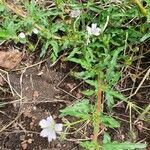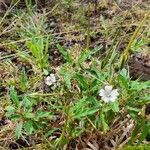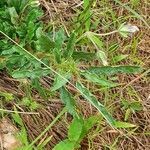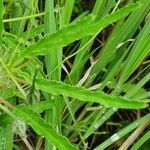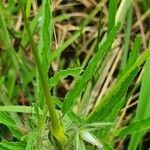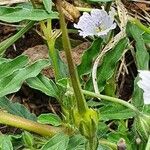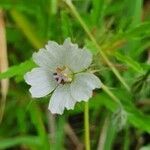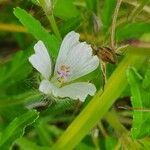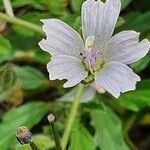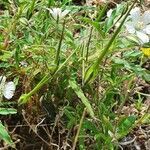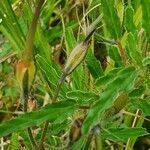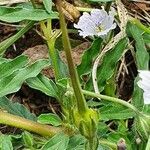Herb, up to 0.5 m high. Leaves petiolate, alternate, upper subopposite or opposite, lamina linear, narrowly elliptic, narrowly ovate, 8-55 x 2-15 mm, emarginate and mucronate at apex, obtuse to cuneate or less often truncate at base, veins prominent beneath, pinnate. Inflorescences: 1-3-flowered; peduncle slender, often obsolete, up to 25 mm long. Sepals narrowly ovate to ovate or narrowly obovate to obovate, dark brown to purplish, 5-10 x 1.5-3.0 mm. Petals narrowly obtriangular to obtriangular, 5-15 x 3-6 mm, white, mauve, pink, blue, purplish or rarely yellow, venation mostly dark blue or greyish. Flowering time Jan.-Mar.
Annual herb, up to 0.5 m high. Stems erect or decumbent; indumentum double with curved and straight hairs. Leaves alternate, subopposite or opposite; blade linear, narrowly elliptic or narrowly ovate, 8-55 x 2-15 mm, apex emarginate, mucronate, margins serrate and sinuate; petioles with same indumentum as stem, 0.2-0.6 x as long as blade. Flowers: inflorescence 1-3-flowered, lateral, axillary; peduncle and pedicel slender with same indumentum as stem; sepals > 5 mm long; petals 6-13 x 3-6 mm, white, mauve, pink, blue, purplish or rarely yellow, venation dark blue or greyish; Nov.-Feb. Fruit with beak > 30 mm long.
An annual herb. It lies along the ground. It grows 50 cm high. The stems are branched and reddish-purple. They are hairy. The leaves are narrowly oblong. There are irregular teeth along the edge. The flowers usually occur singly. They are white or pink with dark blue veins. The fruit is made up or 5 carpels with one seed each. The seeds are pale brown.
